 W
WAct One is an autobiographical 1959 book by playwright Moss Hart. It was the source for a 1963 film and a 2014 Broadway play.
 W
WArabian Sands is a 1959 book by explorer and travel writer Wilfred Thesiger. The book focuses on the author's travels across the Empty Quarter of the Arabian Peninsula between 1945 and 1950. It attempted to capture the lives of the Bedu people and other inhabitants of the Arabian peninsula. It is considered a classic of travel literature.
 W
WThe Armada is a popular history by Garrett Mattingly—a historian who taught at Columbia University—about the attempt of the Spanish Armada to invade England in 1588. It was published in 1959 by Houghton Mifflin Company, and Mattingly won a special Pulitzer Prize for the work in 1960 as "a first class history and a literary work of high order."
 W
WArmenian Golgotha is a memoir written by Grigoris Balakian about his eyewitness account of the Armenian Genocide. The memoir was released in two volumes. Volume 1, about his life prior to and during the Armenian Genocide, was released in 1922. Volume 2, about his life as a fugitive after the Genocide, was released in 1959. Originally published in Armenian, the memoir was later published in various languages including an English translation by Peter Balakian, Balakian's great-nephew, with Aris Sevag.
 W
WThe Berkeley Version of the New Testament is an English translation published by Zondervan in 1945. This "New Berkeley Version in Modern English" was later expanded to include the entire Bible, published in 1959 as the Modern Language Bible.
 W
WBridge Squeezes Complete is a book on contract bridge written by Ann Arbor, Michigan-based mathematics professor Clyde E. Love, originally published in 1959. Written in a "dry, mathematical way", it is still considered one of the most important bridge books ever written and the squeeze vocabulary Love invented remains the basis for all discussions of squeezes.
 W
WThe Broken Spears: The Aztec Account of the Conquest of Mexico is a book by Miguel León-Portilla, translating selections of Nahuatl-language accounts of the Spanish conquest of the Aztec Empire. It was first published in Spanish in 1959, and in English in 1962. The most recent English edition was published in 2007 (ISBN 978-0807055007).
 W
WThe Complete Illustrated Book of Yoga is a bestselling 1960 book by Swami Vishnudevananda, the founder of the Sivananda Yoga Vedanta Centres. It is an introduction to Hatha yoga, describing the Yoga Sutras of Patanjali and the Hatha Yoga Pradipika. It contributed to the incorporation of Surya Namaskar into yoga as exercise.
 W
WThe Country Blues is a seminal book by Samuel Charters, published in 1959 and generally acknowledged as the first scholarly book-length study of country blues music. An album of the same name was issued on Folkways Records as an accompaniment to provide examples of the artists and styles discussed. It was reprinted by Da Capo Press in 1975 with minor edits, and a new introduction by the author.
 W
WDarwin and the Darwinian Revolution is a 1959 biography of Charles Darwin by the historian Gertrude Himmelfarb. The book has been praised for its historical research but heavily criticized for attacking the theory of natural selection.
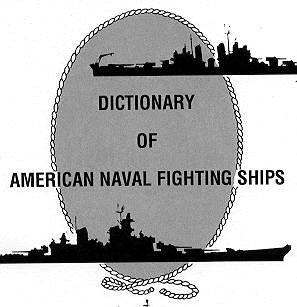 W
WThe Dictionary of American Naval Fighting Ships (DANFS) is the official reference work for the basic facts about ships used by the United States Navy.
 W
WThe Divine Heritage of the Yadavas is a book by Vithal Krishnaji Khedkar which describes a divine heritage from Krishna for those Hindu communities (Jātis) occupied with herding cattle and selling milk. The book posits that the cattle-keeping castes had become incorrectly ranked as Shudra (labourers) in the varna system for a variety of reasons: their adherence to ritual purity was difficult to verify due to their nomadic lifestyle, they castrated animals, and they sold milk commercially. The scholar David Goodman Mandelbaum describes the work as "combin[ing] a traditional origin myth and a highly modernized improvement campaign."
 W
WA Dying Colonialism is a 1959 book by the psychiatrist Frantz Fanon, in which the author provides an account of the Algerian War. The book details cultural and political changes that emerge due to the rejection of French colonial oppression by the Algerian. Issues discussed include the role of women in the liberation struggle, changes to family life, the role of the radio and medicine both as tools of oppression and complicity on one hand as well as tools of freedom and liberation, and Algeria's European minority and their role as potential allies in the conflict.
 W
WEndurance: Shackleton's Incredible Voyage, is a 1959 book written by Alfred Lansing, about the failure of the Imperial Trans-Antarctic Expedition led by Sir Ernest Shackleton, in its attempt to cross the Antarctic continent in 1914.
 W
WThe Failure of the "New Economics" (1959) is a book by Henry Hazlitt offering a detailed critique of John Maynard Keynes' work The General Theory of Employment, Interest and Money (1936).
 W
WFreud: The Mind of the Moralist is a book about Sigmund Freud, the founder of psychoanalysis, by the sociologist Philip Rieff, in which the author places Freud and psychoanalysis in historical context. Rieff described his goal as being to "show the mind of Freud ... as it derives lessons on the right conduct of life from the misery of living it."
 W
WHollywood Babylon is a book by avant-garde filmmaker Kenneth Anger which purportedly details the sordid scandals of famous Hollywood denizens from the 1900s to the 1950s. The book was banned shortly after it was first published in the U.S. in 1965, and remained unavailable until reprinted ten years later. Upon its second release in 1975, The New York Times said of it, "If a book such as this can be said to have charm, it lies in the fact that here is a book without one single redeeming merit." The Daily Beast described Anger's book as "essentially a work of fiction. There is no doubt that many—if not all—of the stories Anger shares in his slim bible have no merit." Film historian Kevin Brownlow repeatedly criticized the book, citing Anger as saying his research method was "mental telepathy, mostly".
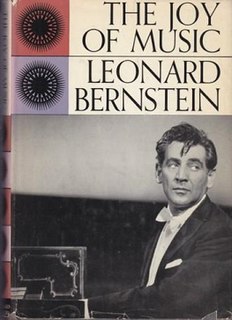 W
WThe Joy of Music is Leonard Bernstein's first book, originally published in 1959 by Simon & Schuster. A highly acclaimed, bestselling work, it is still in print today.
 W
WThe Language of Music is a 1959 book about music by the critic and musician Deryck Cooke.
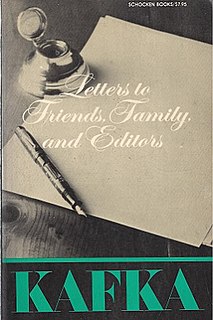 W
WLetters to Family, Friends, and Editors is a book collecting some of Franz Kafka's letters from 1900 to 1924. The majority of the letters in the volume are addressed to Max Brod. Originally published in Germany in 1959 as Briefe 1902-1924, the collection was first published in English by Schocken Books in 1977. It was translated by Richard and Clara Winston.
 W
WLife Against Death: The Psychoanalytical Meaning of History is a book by the American classicist Norman O. Brown, in which the author offers a radical analysis and critique of the work of Sigmund Freud, tries to provide a theoretical rationale for a nonrepressive civilization, explores parallels between psychoanalysis and Martin Luther's theology, and draws on revolutionary themes in western religious thought, especially the body mysticism of Jakob Böhme and William Blake. It was the result of an interest in psychoanalysis that began when the philosopher Herbert Marcuse suggested to Brown that he should read Freud.
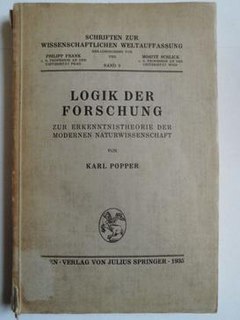 W
WThe Logic of Scientific Discovery is a 1959 book about the philosophy of science by the philosopher Karl Popper. Popper rewrote his book in English from the 1934 German original, titled Logik der Forschung. Zur Erkenntnistheorie der modernen Naturwissenschaft, which literally translates as, "Logic of Research: On the Epistemology of Modern Natural Science"'.
 W
WLokayata: A Study in Ancient Indian Materialism is a famous book on the Lokayata school of Indian philosophy by Debiprasad Chattopadhyaya first published in 1959.
 W
WThe Longest Day is a 1959 book by Cornelius Ryan telling the story of D-Day, the first day of the World War II invasion of Normandy. It includes details of Operation Deadstick, the coup de main operation by gliderborne troops to capture both Pegasus Bridge and Horsa Bridge before the main assault on the Normandy beaches. It sold tens of millions of copies in eighteen different languages. It is based on interviews with a cross-section of participants, including U.S., Canadian, British, French and German officers and civilians.
 W
WThe Magic of Thinking Big, first published in 1959, is a self-help book by David J. Schwartz. An abridged version was published in 1987.
 W
WMainstreams of Modern Art: David to Picasso (1959) is a reference book by John Canaday. It comprehensively covers modern art from the start of Romanticism in the 18th century to Cubism and Abstract art in the early 20th century. Mainstreams enjoyed wide commercial and critical success, and was awarded the 1959 Athenaeum Literary Award.
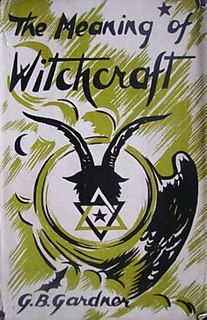 W
WThe Meaning of Witchcraft is a non-fiction book written by Gerald Gardner. Gardner, known to many in the modern sense as the "Father of Wicca", based the book around his experiences with the religion of Wicca and the New Forest Coven. It was first published in 1959, only after the British Parliament repealed the Witchcraft Act of 1735, and proved to be Gardner's final book. The Wicca religion as expounded by Gardner was focused on a goddess, identified with the night sky and with wild nature, and a horned god who represented the fertilizing powers of the natural world. It was organized into covens, through which members were initiated through three ascending degrees of competence and authority and which were governed by a high priestess, supported by a high priest. More historical context to the pagan practice of Wicca can be found in the book Wicca: History, Belief, and Community in Modern Pagan Witchcraft That book discusses Wiccan life, covering how and why people convert to Wicca; its denominations; its sociological demographics; its political beliefs, particularly in terms of environmentalist issues; the impact of anti-Wiccan persecution; the transmission of Wiccan and Pagan culture; and the history of academic analysis of Wicca.
 W
WMy Wicked, Wicked Ways is an autobiography written by Australian-born American actor Errol Flynn with the aid of ghostwriter Earl Conrad. It was released posthumously in 1959 and became immensely popular for its cynical tone and candid depiction of the world of filmmaking in Hollywood. My Wicked, Wicked Ways has sold over one million copies. The book has never been out of print.
 W
WMy Philosophical Development is a 1959 book by the philosopher Bertrand Russell, in which the author summarizes his philosophical beliefs and explains how they changed during his life.
 W
WThe Ohio Company: Its Inner History is a 1959 book by Alfred P. James that chronicles the Ohio Company of Virginia from its informal organization before October 1747 to its terminus no earlier than October 1821.
 W
WPrayer: Conversing With God is a 1959 book about prayer by Rosalind Rinker. In 2006, it was named by Christianity Today as the most influential book with evangelicals over the last fifty years. CT noted that "Rosalind Rinker taught us something revolutionary: Prayer is a conversation with God". It went on to suggest that "today evangelicals assume that casual, colloquial, intimate prayer is the most authentic way to pray."
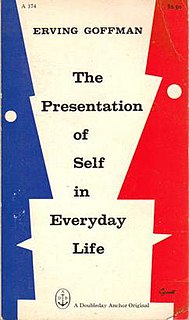 W
WThe Presentation of Self in Everyday Life is a 1956 sociological book by Erving Goffman, in which the author uses the imagery of theatre in order to portray the importance of human social interaction; this approach would become known as Goffman's dramaturgical analysis.
 W
WThe Principle of Hope is a book by the Marxist philosopher Ernst Bloch, published in three volumes in 1954, 1955, and 1959, in which the author explores utopianism, studying the utopian impulses present in art, literature, religion and other forms of cultural expression, and envisages a future state of absolute perfection. The Principle of Hope has become fundamental to dialogue between Christians and Marxists.
 W
WPrinciples of Optics, colloquially known as Born and Wolf is an optics textbook written by Max Born and Emil Wolf that was initially published in 1959 by Pergamon Press. After going through six editions with Pergamon Press, the book was reissued by Cambridge University Press in 1997 and an expanded seventh edition was released two years later. It is considered a classic science book and one of the most influential optics books of the twentieth century.
 W
WRahel Varnhagen: The Life of a Jewess is a book-length biography of Rahel Varnhagen written by political philosopher Hannah Arendt. Originally her Habilitationsschrift she completed it in exile as a refugee, but was not published till 1957, in English, in the UK (London) by East and West Library.
 W
WReminiscences of the Anti-Japanese Guerillas is a collection of memoirs of North Korean guerillas fighting during the 1930s and 1940s in Manchuria against the Japanese. It was used as a textbook for indoctrination until it was effectively replaced by another piece of guerilla literature, Kim Il-sung's autobiography With the Century, in the 1990s. The memoirs were written in order to portray Kim Il-sung as a national liberator, and to strengthen his cult of personality. However, the memoirs are still used as a textbook in ideological workplace study sessions, as well as in other forms of indoctrination. Many of the memoirs have been adapted as movies by the North Korean film industry.
 W
WReport from Practically Nowhere is a 1959 humorous travelogue by American journalist John Sack, illustrated by Shel Silverstein. The book consists of thirteen profiles of microstates, principalities, autonomous areas, and other places visited by the author:Lundy Sark Andorra Monaco Liechtenstein San Marino Sovereign Military Order of Malta Mount Athos Sharja Swat Amb Punial Sikkim
 W
WThe Sleepwalkers: A History of Man's Changing Vision of the Universe is a 1959 book by Arthur Koestler. It traces the history of Western cosmology from ancient Mesopotamia to Isaac Newton. He suggests that discoveries in science arise through a process akin to sleepwalking. Not that they arise by chance, but rather that scientists are neither fully aware of what guides their research, nor are they fully aware of the implications of what they discover.
 W
WThe Sociological Imagination is a 1959 book by American sociologist C. Wright Mills published by Oxford University Press. In it, he develops the idea of sociological imagination, the means by which the relation between self and society can be understood.
 W
WSome Notes on H. P. Lovecraft is a collection of biographical notes about H. P. Lovecraft by writer August Derleth. It was released in 1959 by Arkham House in an edition of 1,044 copies.
 W
WThe Springing Tiger is a historical account of the Indian National Army published in 1959 by Col Hugh Toye. The book was published in London by Cassell Publishers, and is considered one of the first Sympathetic Western accounts of the army. Toye worked as an intelligence officer in World War II in Burma, and was tasked with interrogating captured soldiers of the INA by the CSDIC(I). The book is provided with a foreword by Phillip Mason, who in 1946 was the Secretary of the War department in India. The book describes in detail the formation of the INA under the auspices of the F Kikan of Japanese intelligence through the collapse and subsequent revival of the army under Subhas Chandra Bose, its role in the Battles of Imphal and Kohima and the subsequent collapse in the face of Allied Burmese offensive before ending with the alleged death of Subhas Chandra Bose.
 W
WThis is My God is a non-fiction book by Herman Wouk, first published in 1959. The book summarizes many key aspects of Judaism and is intended for both Jewish and non-Jewish audiences. The author, who served in the United States Navy and was a Pulitzer Prize–winning novelist, writes from a Modern Orthodox perspective.
Thought and Action is a 1959 book about action theory by the philosopher Stuart Hampshire. The book has received praise from commentators, and is considered Hampshire's major work.
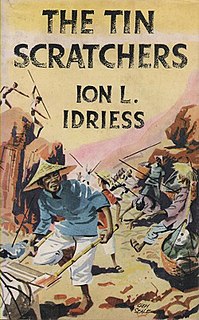 W
WThe Tin Scratchers: The Story of Tin Mining in the Far North is a 1959 autobiographical book by Ion Idriess.
 W
W"The Two Cultures" is the first part of an influential 1959 Rede Lecture by British scientist and novelist C. P. Snow which were published in book form as The Two Cultures and the Scientific Revolution the same year. Its thesis was that science and the humanities which represented "the intellectual life of the whole of western society" had become split into "two cultures" and that this division was a major handicap to both in solving the world's problems.
 W
WUnwilling Emigrants is a book by Alexandra Hasluck. It is both a general study of Western Australia's convict era, and a biography of a particular convict, William Sykes. First published in 1959 by Oxford University Press in Melbourne, it was for many years the only published history of the era. It was republished in 1991 by Fremantle Arts Centre Press. It was one of eleven books that Hasluck wrote.